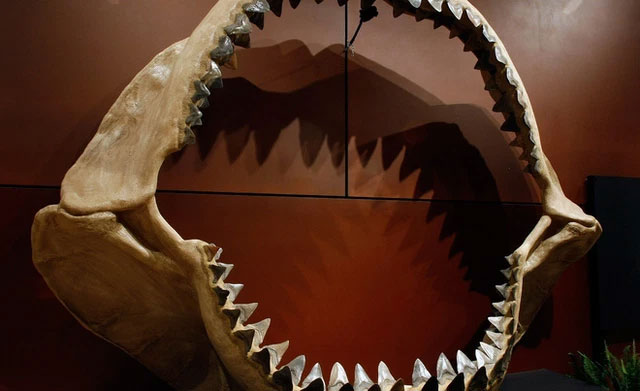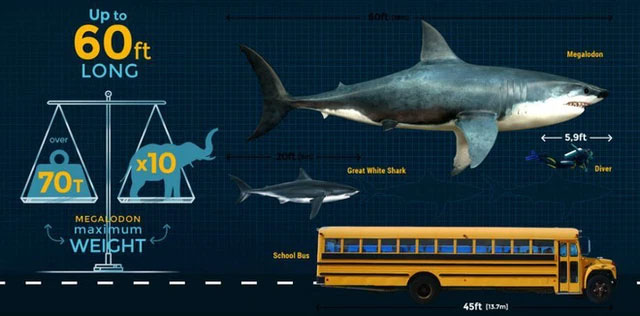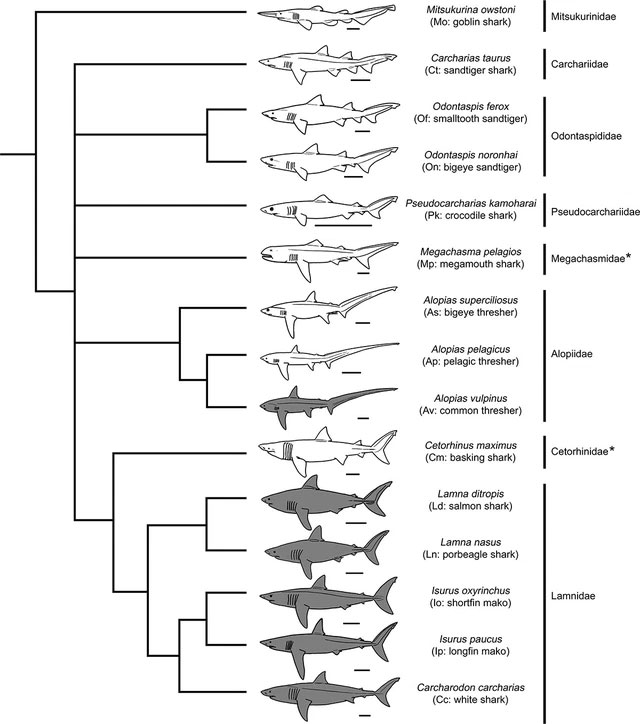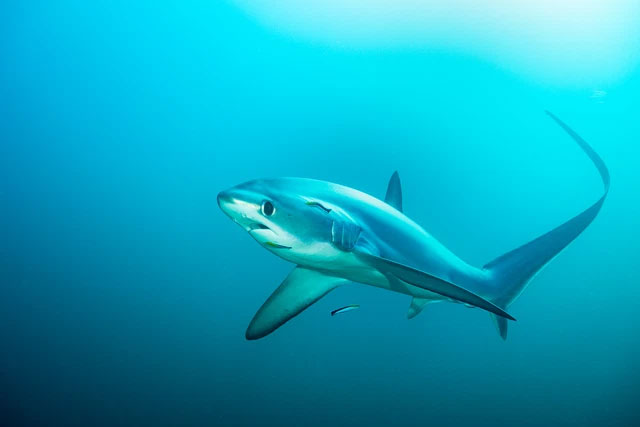The oceans of Earth were once home to a terrifying predatory creature. We only know from fossilized teeth and vertebrae that the megalodon shark (Otodus megalodon) was truly gigantic. Many fossilized teeth have been discovered that are as large as a human hand. However, we can only conclude that the megalodon was the largest shark ever to swim in the seas, with a jaw capable of easily swallowing a human.
Aside from its massive size, scientists have yet to determine the exact shape of the megalodon. Sharks are primarily made of soft tissue, and their bodies are supported by cartilage rather than bone. Most of what remains of the megalodon has not survived the 3.6 million years since its extinction. This means we have to guess what it looked like mostly based on those teeth and vertebrae.

Simulation of megalodon shark teeth.
Did it have a massive body like a great white shark? Or a long tail like a thresher shark, or a pointed head like a goblin shark? According to recent research, the best answer we have right now is… a shrug from scientists.

Illustration of megalodon
A research team led by biologist Phillip Sternes from the University of California Riverside stated: “The fact is that, so far, there is no scientific method that supports or refutes the accuracy of any body shape of O. megalodon that has been published before.”
Based on fossil evidence, estimates of the megalodon’s size have significant discrepancies; it is believed to have been between approximately 11 meters and over 40 meters long, but most researchers agree it was somewhere around 15 to 18 meters. A new measurement suggests it could be as long as 20 meters. However, overall, the size of the megalodon remains an unanswered mystery.

Many research models suggest megalodon resembles the great white shark (Carcharodon carcharias), one of the most ferocious predators of the ocean and the largest predatory shark alive today. The great white shark belongs to the family Lamnidae, with only five species still existing.
These sharks are characterized by their fast swimming speed and are regionally endothermic animals – their blood vessels are heated by their muscles, allowing some parts of their bodies to maintain a higher temperature than the rest. This helps keep their muscles and brains warm while improving their metabolic processes. They can swim faster, endure colder environments, and hunt and digest food more efficiently.
Megalodon does not belong to the Lamnidae family, but scientists believe it is closely related, having branched off during the Cretaceous period. Researchers also suggest it was a regionally endothermic species, providing the ancient monster with similar advantages to its modern relatives. This would place the megalodon in the Lamniformes order, which includes the Lamnidae family.

Fifteen species in the Lamniformes order still exist. Species marked in gray indicate regional endothermic species; families with asterisks denote plankton-eating classifications.
Due to this close relationship, scientists often explore what the megalodon looked like by relying on sharks in the Lamnidae family. They averaged the characteristics of several lamnid shark species to determine a form that could resemble what megalodon might have looked like in ancient times.
Sternes and colleagues conducted a broader study, examining the shapes of five lamnid sharks used in a previous study to reconstruct megalodon, and comparing them with other cold-blooded sharks in the Lamniformes order, using detailed 2D drawings. The Lamniformes order includes some sharks with bizarre shapes, such as the goblin shark.
They compared the head, fins, tail, and body, but ultimately found no distinguishing features that set lamnid sharks apart from other species in the Lamniformes order.

The researchers’ analytical model shows morphological similarities among 15 existing Lamniformes species.
“Being warm-blooded does not make them a distinctly shaped shark,” Sternes said. “This result clears up some confusion regarding previous findings and opens the door for other ideas.”
This research has dispelled what we often think about the megalodon; the megalodons you see in pictures, movies, and so on may have looked very different when they swam in the oceans tens of millions of years ago. Determining the shape of the megalodon will require a new approach. But that opens up exciting possibilities.
Paleontologist Kenshu Shimada from DePaul University stated: “This study may seem like a step back in science, but the mystery continues to make paleontology, the study of prehistoric life, an exciting scientific field.”
“Not knowing exactly what O. megalodon looked like will allow our imaginations to continue to grow. This is why paleontology remains such an intriguing field. We will continue to search for more clues in fossil samples.”

Could the megalodon we have always feared actually resemble this thresher shark?


















































